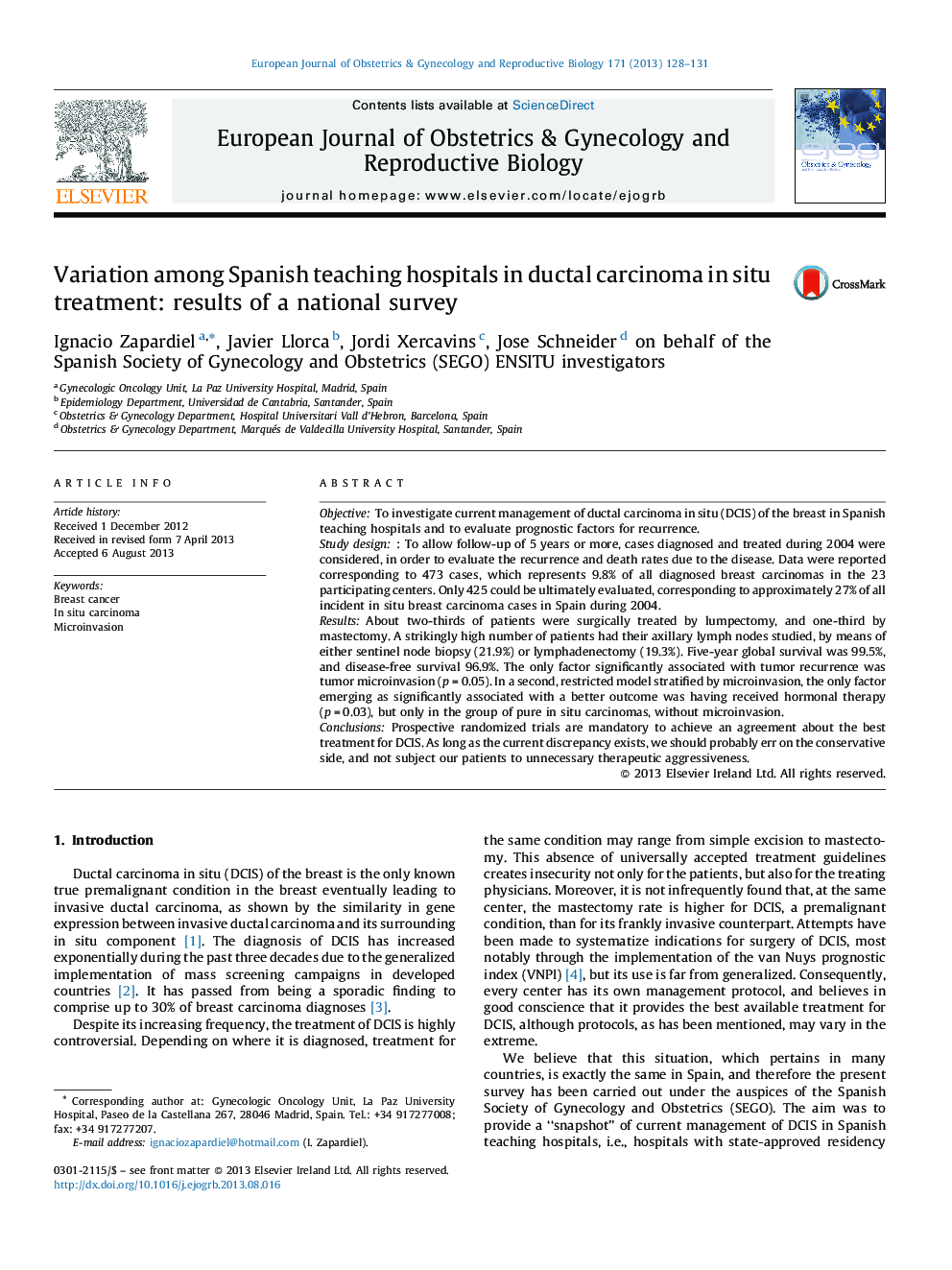| Article ID | Journal | Published Year | Pages | File Type |
|---|---|---|---|---|
| 3919845 | European Journal of Obstetrics & Gynecology and Reproductive Biology | 2013 | 4 Pages |
ObjectiveTo investigate current management of ductal carcinoma in situ (DCIS) of the breast in Spanish teaching hospitals and to evaluate prognostic factors for recurrence.Study design: To allow follow-up of 5 years or more, cases diagnosed and treated during 2004 were considered, in order to evaluate the recurrence and death rates due to the disease. Data were reported corresponding to 473 cases, which represents 9.8% of all diagnosed breast carcinomas in the 23 participating centers. Only 425 could be ultimately evaluated, corresponding to approximately 27% of all incident in situ breast carcinoma cases in Spain during 2004.ResultsAbout two-thirds of patients were surgically treated by lumpectomy, and one-third by mastectomy. A strikingly high number of patients had their axillary lymph nodes studied, by means of either sentinel node biopsy (21.9%) or lymphadenectomy (19.3%). Five-year global survival was 99.5%, and disease-free survival 96.9%. The only factor significantly associated with tumor recurrence was tumor microinvasion (p = 0.05). In a second, restricted model stratified by microinvasion, the only factor emerging as significantly associated with a better outcome was having received hormonal therapy (p = 0.03), but only in the group of pure in situ carcinomas, without microinvasion.ConclusionsProspective randomized trials are mandatory to achieve an agreement about the best treatment for DCIS. As long as the current discrepancy exists, we should probably err on the conservative side, and not subject our patients to unnecessary therapeutic aggressiveness.
